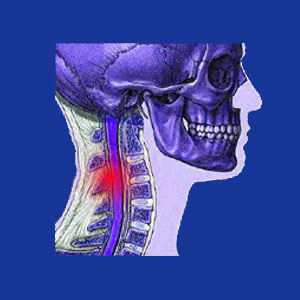
Cervical stenosis comes in 3 distinct forms that can affect the anatomy of the neck and the neurological structures contained therein. Stenosis is a term which means a closed-off section of an otherwise open anatomical space or a reduction in the size of an otherwise patent bodily canal. Stenosis affects many structures throughout the anatomy, besides the spine, including circulatory vessels, such as arteries and veins.
This article provides an overview of the 3 basic types of spinal-related stenotic changes, as well as helping diagnosed patients to better comprehend these conditions. We will examine the causes, symptoms and treatments for spinal stenosis in its various forms.
3 Types of Cervical Stenosis
There are 3 primary types of stenosis that typically affect patients in the neck region:
Central canal stenosis is also simply called spinal stenosis in the neck. This condition is defined as a reduction in the effective size of the canal that surrounds the actual spinal cord. This space is called the central canal. Spinal stenosis is certainly the most serious form of stenotic change in the cervical region, since it can affect the entire cord structure and therefore, have consequences to the entire anatomy below the affected level of the spine.
Neuroforaminal stenosis is also simply called foraminal stenosis. This condition is much smaller in affected area, possibly only affecting one part of one side of a single spinal nerve root. However, it can also affect multiple parts, or entire roots, as well as multiple roots in the neck anatomy. Foraminal stenosis s defined as a reduction in the opening through which the spinal nerve roots pass as they exit the central canal of the vertebral column. When someone is diagnosed with a pinched spinal nerve, this is virtually always the condition which is structurally responsible.
Lateral recess stenosis is not nearly as commonplace, but can still occur in the neck, as well. Lateral stenosis is often seen as a relative to foraminal stenosis. The lateral recess is the area immediately to the left and right of the central canal that contains the spinal nerve roots as they head towards the nearby neural foramen to exit from the spine. Some pinched nerves can occur here, but in far less numbers than those which are blamed on, and might actually occur from, foraminal stenotic change.
Stenosis Causes, Symptoms and Treatments
All forms of stenosis can be caused by, or contributed to, through various possible sources including: aging, injury, genetic predisposition, atypical anatomy, congenital defect and idiopathic factors.
There is no universal cause for stenotic change, although most cases exist due to normal and completely expected spinal degeneration that is inherent to the aging process.
Spinal stenosis of the central canal is impossible to characterize, as far as symptomatic expressions. This is because symptoms can affect numerous tracts of tissue within the spinal cord, or none at all.
Some patients suffer no significant expressions from even moderate to severe cases of stenosis, while others might suffer a few, or many, symptoms.
Some of the most common expressions include pain, tingling, weakness and numbness below the affected levels, as well as the inability to stand, control the bowels or bladder or utilize sexual functionality.
Meanwhile lateral and neuroforaminal stenosis are far more specific, with patients usually suffering no symptoms, unless definitive nerve root compression exists.
If a nerve does suffer compression and subsequent dysfunction, the patient can experience pain, paresthesia, burning or weakness in the area of the body that is served by the impinged nerve. However, chronic pain is not common, as continuing compression should produce a state of objective numbness after a short interval.
Treatment for all forms of stenosis range the full gamut of medical, complementary and alternative healthcare. There are hundreds of options available, but most are illogical, if a cure is to be expected.
The vast majority of treatments only act on the symptoms and do nothing to resolve the underlying stenotic changes.
The only exceptions to this rule include surgery, spinal decompression for indicated conditions and rare instances of chiropractic cures.
Cervical Stenosis Summation
Stenosis sounds scary and can certainly be a terrible condition in its more extreme forms. However, it is vital to understand that all forms are inherent to our species, as universal aspects of getting older. We will all suffer these changes to one degree or another and most of us will not endure many, if any, ill effects.
If true neurological compression exists, symptoms are likely to also be present in some form or another. In these instances, we advise seeking expert care from a spinal neurologist, to ascertain the extent of the condition and guide the patient to the most appropriate and effective treatment selections.
Stenosis is just like any other potentially painful back or neck condition. We recommend researching the condition and learning all you can, before seeking any drastic or ongoing therapy. After all, it is your life and your health that are at stake.
Do not trust these precious gifts to any single caregiver blindly. This is surely a recipe for disaster. Instead, get multiple opinions and be sure to include the one that is most crucial of all: your own. However, learn all that you can first, to be sure that your input is based on knowledge and not simply influenced by irrational fear or medical propaganda.





